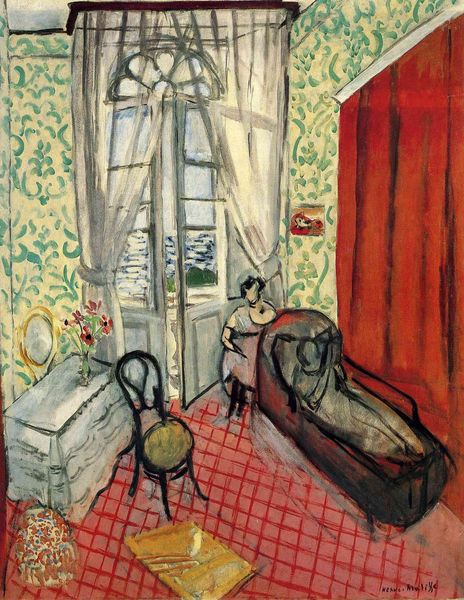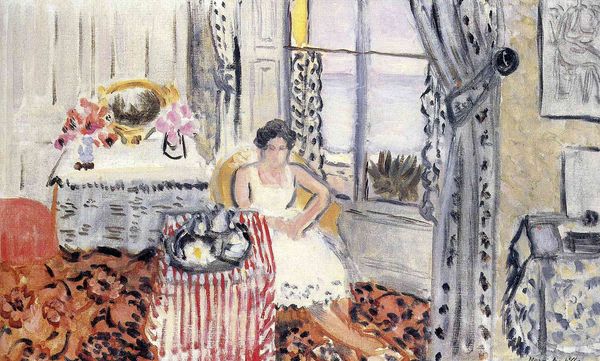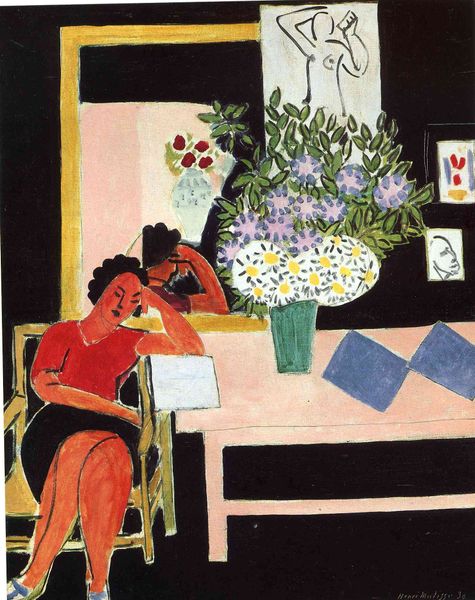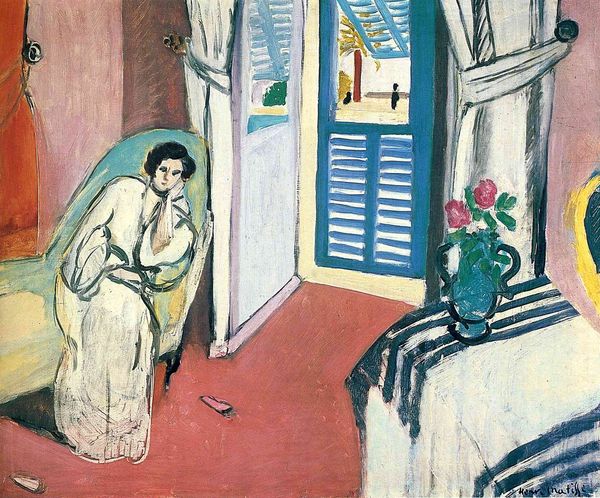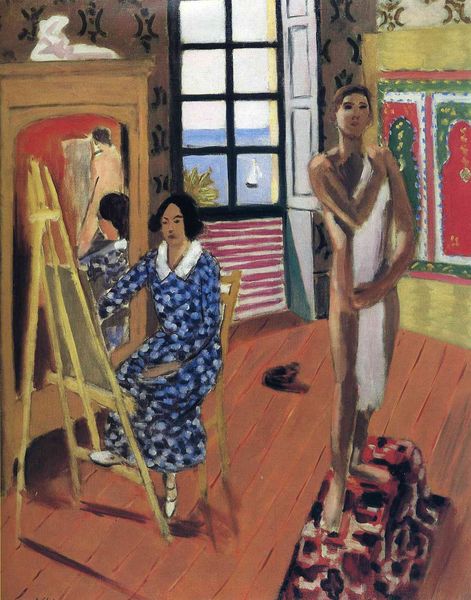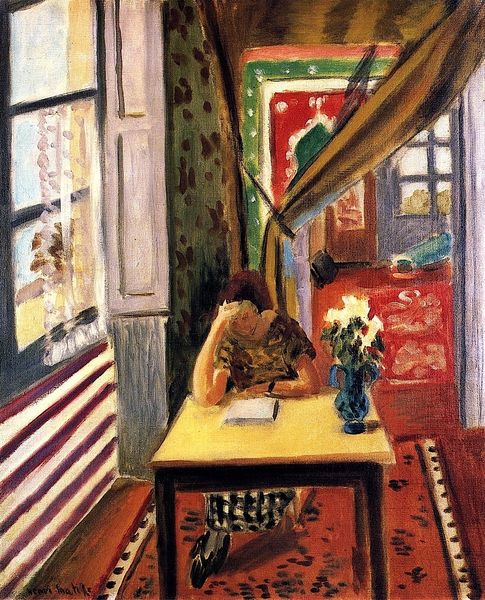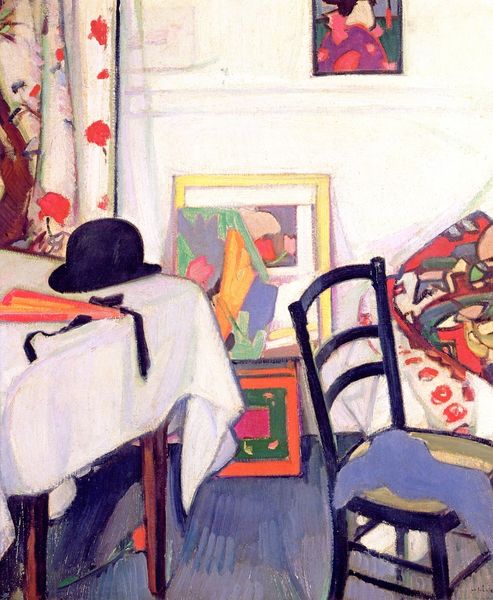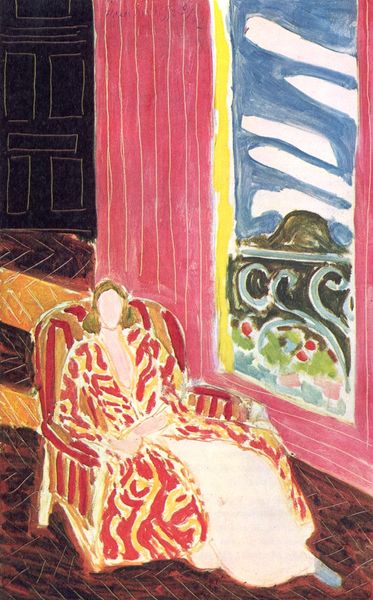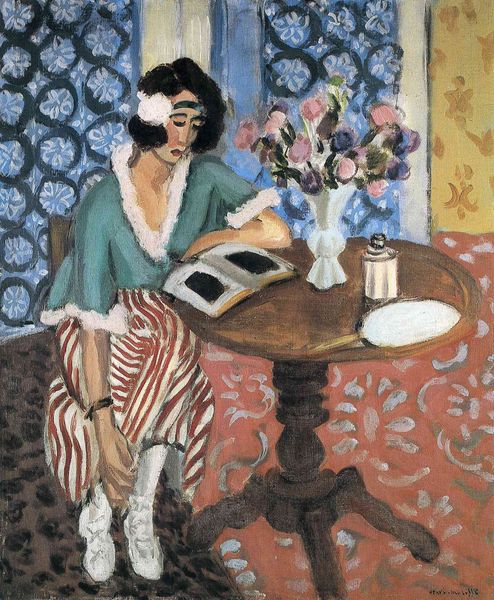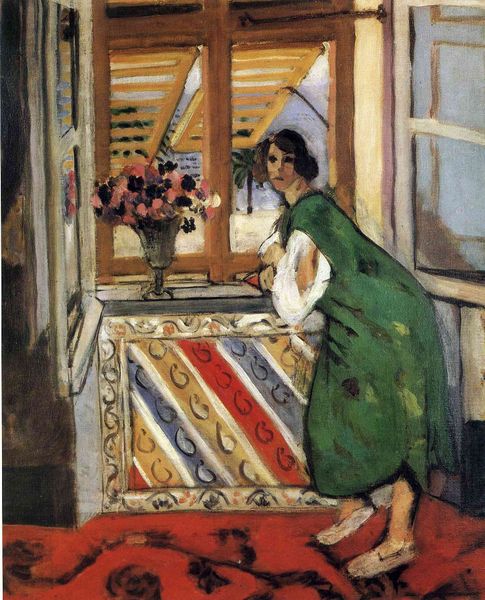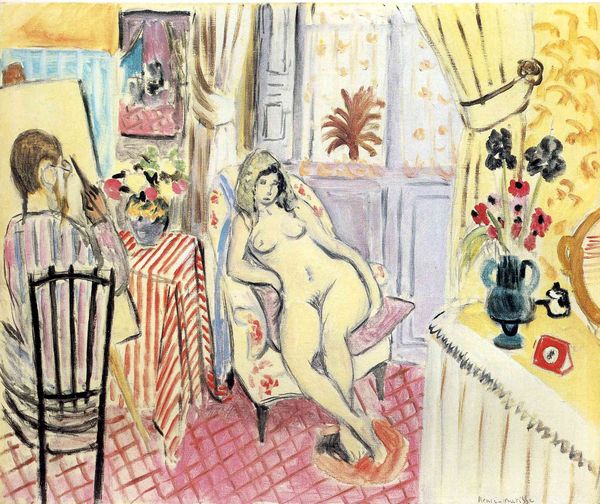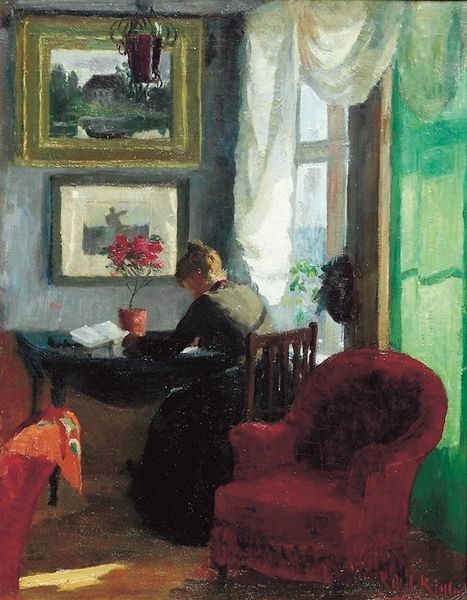
Copyright: Henri Matisse,Fair Use
Curator: Before us hangs Henri Matisse's "The Morning Session," an oil painting dating from 1924. It’s a superb example of the artist’s exploration of intimate, interior spaces. Editor: It’s strikingly vibrant. That insistent red floor, clashing yet harmonizing with the yellow stripes of the woman’s dress and the striped cloth visible near the window… it feels charged, alive. Curator: Note how the composition is built upon a series of carefully constructed planes and geometric forms. The window frames the external landscape, but that view is deliberately flattened and stylized, drawing attention back to the interior space. Editor: Absolutely, it reads less like a true window onto the world and more like another design element contributing to the flattened pictorial space. There’s an interesting tension there between realism and decoration that reflects the social function of representing domesticity during the roaring twenties. Curator: Precisely! And consider how Matisse employs color to create spatial ambiguity. The juxtaposition of warm and cool tones flattens perspective, while the decorative patterns further dissolve any sense of deep space. Editor: One also cannot overlook the domestic role. The sitter is presented, and is working, from her domestic location. But look at the shadows and outlines. There's little to no shadow defining her and creating a three-dimensional depth in the work. Her studio could just as easily be interpreted as performative, showing that Matisse wanted her portrayed and elevated as such. Curator: You are perceptive in identifying Matisse's tendency to liberate colour. The interplay of line and color establishes pictorial logic while challenging the very nature of realism and traditional studio practices. Note also that painting within a painting—her work mirrors Matisse’s own creative process, which emphasizes abstraction as it simultaneously alludes to intimate social history. Editor: Overall, the composition is jarring, while in its own harmony, yet it speaks so much more than a studio shot ever would. Curator: Precisely. This close observation reveals a masterful blend of the decorative and the spatial—reflecting Fauvism as an early impressionistic ideal in a domestic-style portrait. Editor: Yes, seeing it through your lens allows me to appreciate Matisse's genius at harmonizing contrasts into an oddly satisfying tableau that challenges our perceptions of representation. Curator: And for me, examining its historical context underscores the importance of questioning established modes of art production and viewership and opens discussions of agency in its own way.
Comments
No comments
Be the first to comment and join the conversation on the ultimate creative platform.
